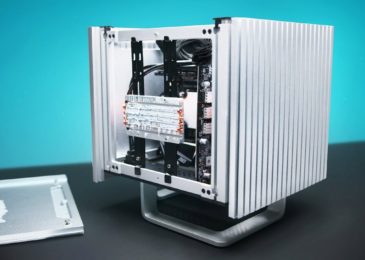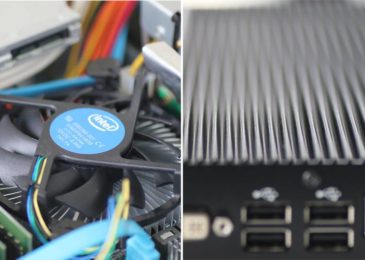The majority of manufacturing businesses are shifting to better data mobility and manufacturing operations because of the arrival of edge computing and industry 4.0. Since there are several PCs used due to their efficient communication ability, there is a surge in demand for smarter and more stable computers to streamline complex automation tasks. And with the shift of most manufacturing firms to utilise smart machines within the factory area, this has triggered an increased demand for Esis fanless embedded computer systems that can perform the toughest tasks even in challenging conditions.
Normally, a design issue that has been taken for granted by most users is the capability to function properly during wide thermal temperatures and operate 24/7 even in the toughest industrial setting. Consequently, different primary design setups feature active or passive cooling that will eliminate the harsh heat for the computer in a rough industrial environment.
Passive cooling
 This method relies on architectural designs and heat sinks to acquire more natural air convection and thermal dissipation. An excellent example is the external chassis of typical industrial PCs that serve as strong heat sinks to get rid of heat from major components.
This method relies on architectural designs and heat sinks to acquire more natural air convection and thermal dissipation. An excellent example is the external chassis of typical industrial PCs that serve as strong heat sinks to get rid of heat from major components.
Such a concept has various advantages for applications in industrial settings that are inappropriate for fanned units like silent operation, lower downtime, heat conductivity, and long service life.
Active cooling
 Unlike passive cooling, which primarily depends on natural convection, the active cooling method uses energy to acquire higher levels of cool temperatures. It utilises an internal fan to provide air to the unit’s main components and control the thermal levels.
Unlike passive cooling, which primarily depends on natural convection, the active cooling method uses energy to acquire higher levels of cool temperatures. It utilises an internal fan to provide air to the unit’s main components and control the thermal levels.
One of the significant advantages of fanned computers is its capability to maximise the compute power and performance fully. An ideal example is data centres that give multiple rackmount PCs and servers for data storage scalability, and stable compute performance. These units perform the very complicated computational algorithms that serve as the bedrock of artificial intelligence and machine learning.
Through powerful fans that provide active cooling, computers and servers can perform to the best of their abilities. Failure to provide cooling systems, whether the active or passive method, to the computers, can result in overheating and irreparable damage to the parts.
Importance Of Passive Cooling In Industrial Applications
The Esis fanless designs or passive cooling carry have been much preferred due to the moving parts and fans as the main points of failure. One of its primary benefits is the ability to get rid of the fans as well as manage the dust level and entry of particulates, which protects from potential hardware failure. More and more firms are going for a fanless design, especially in the rugged and industrial applications that are normally open to dust, debris, and other harsh contamination. The primary objective of an industrial PC is to lessen the number of moving components, which can strengthen the unit’s reliability and life span, particularly in shock-prone deployments.
Whether it is the Esis fanless embedded system or the active method, heat removal via the cooling systems is imperative for computers. The heat is the standard byproduct of the manufacturing procedure. It is necessary to control the temperature levels most effectively and efficiently. With industrial applications where temperature fluctuation is always extreme, having a reliable cooling system is crucial. Hence, firms should select a reliable cooling system to maintain their computers and servers’ high performance.